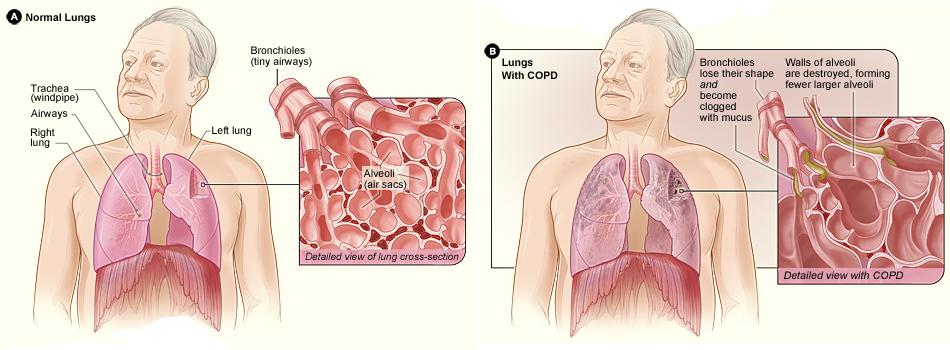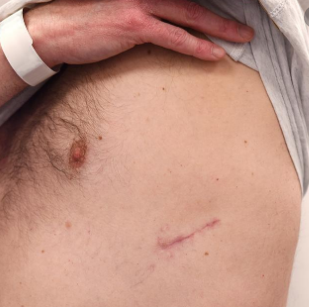What you need to know about Lung Volume Reduction Surgery
Contents
- 1 What you need to know about Lung Volume Reduction Surgery
- 2 What does the Procedure Involve?
- 3 How Long Should I Stay at my Destination?
- 4 What’s the Recovery Time?
- 5 What About Aftercare?
- 6 What’s the Success Rate?
- 7 Are there Alternatives to Lung Volume Reduction Surgery?
- 8 What Should You Expect Before and After the Procedure
Lung volume reduction surgery is a surgical procedure that is performed to remove damaged, emphysematous lung tissue to allow the remaining tissue to function better. This procedure is designed to help patients with severe emphysema, a type of chronic obstructive pulmonary disease (COPD), to breathe easier. The surgery involves removing small wedges of diseased lung tissue, usually around 20 to 30 percent of each lung, to make the lung smaller and allow the remaining tissue to function better.
-
Your doctor may recommend you undergo this surgery if you have severe COPD. However, not everyone with COPD can undergo this surgery. The best candidates are those who:
-
Have severe lung damage (emphysema), especially in the upper portion of the lung.
-
Have not smoked for at least 6 months.
-
Are younger than 75 to 80 years old.
-
Cannot exercise well after completing pulmonary rehabilitation.
In order to determine whether you might benefit from lung volume reduction surgery, your doctor may recommend you to have:
-
Physiological evaluation and imaging tests, including tests of the heart and lung function and exercise tests. In some cases, you may also need a computerized tomography (CT) scan of your lungs to evaluate the location and severity of the emphysema.
-
Initiation of pulmonary rehabilitation, which is a program that helps increase awareness of people’s physical function and emotion to empower people to take care of themselves.

What does the Procedure Involve?
There are several surgical approaches that can be used to perform lung volume reduction surgery, including:
-
Sternotomy – in a median sternotomy, your surgeon creates an incision through the skin and bone in the middle of your chest to access the lung. Once the lungs are exposed, your surgeon will reduce the volume of your lungs. A sternotomy is a bilateral approach, meaning your surgeon will reduce both lungs, one after the other, at the same sitting. After your surgeon finishes, the chest bone is wired together and the skin is closed. Since this is the most invasive technique, it is only used when other types of approaches are not appropriate and usually used for upper lobe disease only.
-
Thoracotomy – your surgeon creates an incision, approximately 5 to 12 inches long, between your ribs. Then, they will separate the ribs to expose one of your lungs. Only one lung is reduced in this procedure (unilateral). Once your surgeon finished, your muscles and skin are closed by sutures. This procedure is usually used when there are dense adhesions (scar tissue) found.
-
Thoracoscopy – this is a minimally invasive technique that requires three to five small incisions (approximately 1 inch). The incisions are made on both sides of the chest, between your ribs. Then, your surgeon inserts a video scope through one of the incisions to allow them to see your lungs without having to expose it. A stapler and grasper are then inserted into the other incisions to cut away the most diseased or damaged areas of the lung. The stapler will also be used to reseal the remaining lung and dissolving sutures are used to close the incisions. With thoracoscopy, the volume of one or both lungs can be reduced.
The safest surgical approach to treat your specific condition will be determined by your doctor and will be performed under general anesthesia.
How Long Should I Stay at my Destination?
After lung volume reduction surgery, you need to stay in the intensive care unit (ICU) overnight and then a regular hospital unit for around 5 to 14 days. It is advisable that you stay in the area for 14 more days for initial recovery. You also need to attend follow-up checkups with your surgeon within 7 to 10 days after you are discharged from the hospital to evaluate your condition and healing.
What’s the Recovery Time?
The recovery time after lung volume reduction surgery can differ from one person to another, depending on your underlying health problem and any possible complications that may occur during surgery. In general, full recovery time until you can resume physical activity make take around 8 to 12 weeks. However, you may be able to resume some of your normal activities and work if your job is not physically demanding. Your surgeon will give you a detailed recovery timeline, including the exact time you can exercise and work.
What About Aftercare?
During your recovery period, you will be encouraged to walk and perform some rehabilitative exercises as soon as possible. You also need to take part in a pulmonary rehabilitation program, which includes:
-
Medical management
-
Breath retraining
-
Exercise
-
Education
-
Emotional support
-
Nutrition counseling.
The aim of pulmonary rehabilitation is to decrease respiratory symptoms and complications, improve physical condition, encourage self-management, and improve emotional wellbeing.
What’s the Success Rate?
Lung volume reduction surgery is a safe and effective procedure and it is highly successful and studies have revealed that it can improve lung function, exercise capacity, and overall quality of life compared with patients who were not treated surgically.
Although the procedure is very safe, especially when performed by skilled surgeons, there are some risks and side effects of the procedure. The most common complication is air leaks, which cause air to constantly escape from the lung into the chest cavity. Other risks include pneumonia or infection, bleeding, stroke, heart attack, and death.
Are there Alternatives to Lung Volume Reduction Surgery?
There are some approaches that are currently being investigated as the alternatives to lung volume reduction surgery, this includes using endobronchial valves to perform lung volume reduction without having to create incisions. The valves are inserted into the lung through a procedure called a bronchoscopy, which involves inserting a bronchoscope (a long, thin tube) through the nose or mouth and down to the airway.
What Should You Expect Before and After the Procedure
Before lung volume reduction surgery, it may be hard for you to breathe as your lungs have been damaged by severe COPD. After the procedure, you should be able to breathe easier and your exercise capacity will be improved.
For an in-depth analysis of Lung Volume Reduction Surgery, watch this short video.
To check prices or to book a Lung Volume Reduction Surgery, in Thailand or anywhere else in the world, head on over to MyMediTravel now!

